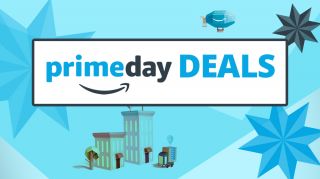Another Record Breaking Prime Day: What You Need to Know
Written By: Caroline Egan
Another Prime Day has passed, and the numbers indicate it was (yet again) a record breaking day for the e-tail giant with over $4.2 billion in sales. There were hiccups (site outages across the globe left customers frustrated), there were deals on deals, and there was a surge in smart home device purchases.
With every Prime Day, there are a lot of lessons and trends to come out of it. We’ve rounded up the top statistics and trends from the 36 hour frenzy.
The Key Statistics from Amazon Prime Day 2018:
- $4.2 billion in sales
- 100 million products sold in 36 hours
- Amazon lost $1-$2m per minute during outages
- 89% boost in sales in first 12 hours
Which categories and products won Amazon Prime Day?
- 1 million smart home devices sold
- 5 million toys were purchased (1.5 million more than 2017 and 3 million more than 2016)
- 23% of sales were in the Electronics & Accessories category
- 300,000 Instant Pots were sold
- 150,000 Lifestraw personal water filters
Voice Shopping Will Become a Larger Factor in Selling
We projected this last year, but did you know that over 1 million smart home devices were sold this year? Amazon heavily discounted and promoted it’s Echo products this year. It paid off. Sales of Echo Products were 45 times greater than the average day. Consumers are going to be using voice search more frequently as the smart home devices become more ubiquitous. Amazon’s big push for this product segment is a signal to brands: get your product information modified for voice or you won’t be getting into the top results.
Amazon Private Label Products are Getting a Boost
When it comes to Prime Day, Amazon knows how it time to seize on promoting their private label products. With aggressive price points and prominent home page placement, Amazon used Prime Day as a way to test and validate their products. This is an optimal way to gain consumer trust in their private label products at enticingly low price points. Amazon will continue to develop more private label brands and push them to the top, giving less and less space to brand manufacturers who have traditionally dominated categories.
With Amazon Dominating Numerous Categories, Brands Need An Edge
Amazon’s growth is explosive, and as they continue to innovate on their product selection and move consumers away from traditional ecommerce experiences (i.e. voice search), brand manufacturers selling on the etailer need constant oversight to all the moving parts that drive success or failure on the channel. Product content and imagery is one piece of the puzzle, but the brands that will win against Amazon’s own private label efforts and getting the top voice search result will be watching their sales velocity, inventory levels, and prices. These moving parts can be tackled with the right technology and iterative approach.
Written by: Caroline Egan
Caroline Egan (she/her) is a writer and former content marketing manager at Salsify, where she focused on crafting campaigns to drive brand awareness and customer engagement.
Recent Posts
5 Ecommerce Tips To Help Marketers Enter the New Year Stress-Free
How Many Digital Sales Channels Do Shoppers Review Before Purchasing Products?
What the Data Says About Consumer Interest in AI Shopping Agents
Subscribe to the Below the Fold Newsletter
Standing out on the digital shelf starts with access to the latest industry content. Subscribe to Below the Fold, our monthly content newsletter, and join other commerce leaders.


.svg)